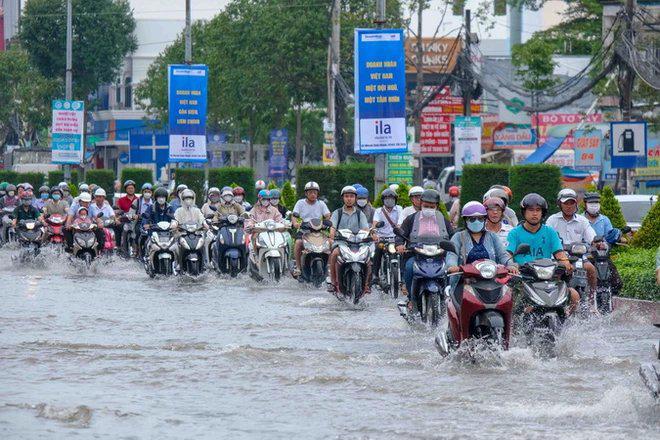Mr. Nguyen Van Hieu, Party Secretary of the Mekong Delta’s Can Tho city, met with the city’s People’s Committee, relevant agencies, and departments on March 13 regarding a proposal for investment in a flood prevention project and urban restructuring.
At the meeting, Mr. Nguyen Qui Ninh, Director of the Irrigation Branch at the Can Tho Department of Agriculture and Rural Development, said the flood prevention and resilience project will have total investment of more than VND2.3 trillion ($93 million) and is expected to be completed by 2030.
Three embankments with a total length of more than 8.2 km along with 12 water control culverts and six tidal sluice gates are to be installed to prevent flooding on around 2,770 ha of the central core area of Can Tho.
Speaking at the meeting, Mr. Tran Quoc Vu, Party Secretary of Binh Thuy district, said the district is currently facing difficulties in funding to support affected households.
Therefore, the district has proposed auctioning off some commercial resettlement land plots to obtain funding for site clearance.
Concluding the meeting, Mr. Hieu affirmed that the project holds significance on multiple fronts. In addition to flood prevention, fostering sustainable urban development and adapting to climate change, the project also entails urban restructuring and the development of a modern, comprehensive infrastructure system to meet the socio-economic development needs of the city.
Because of these factors, he proposed that the project be fast tracked. If necessary, local agencies can seek additional input from units such as Can Tho International Airport, Military Region 9, and the Tra Noc Industrial Park to diversify information channels and increase persuasiveness.
The Department of Agriculture and Rural Development has been requested to promptly coordinate with Binh Thuy district to conduct a survey of the affected areas and the number of affected households to receive compensation and resettlement.
Regarding capital for the projects, he suggested two options: to ask the government for access to an ODA loan or to pull funds from the central budget surplus for the 2021-2026 period.









 Google translate
Google translate